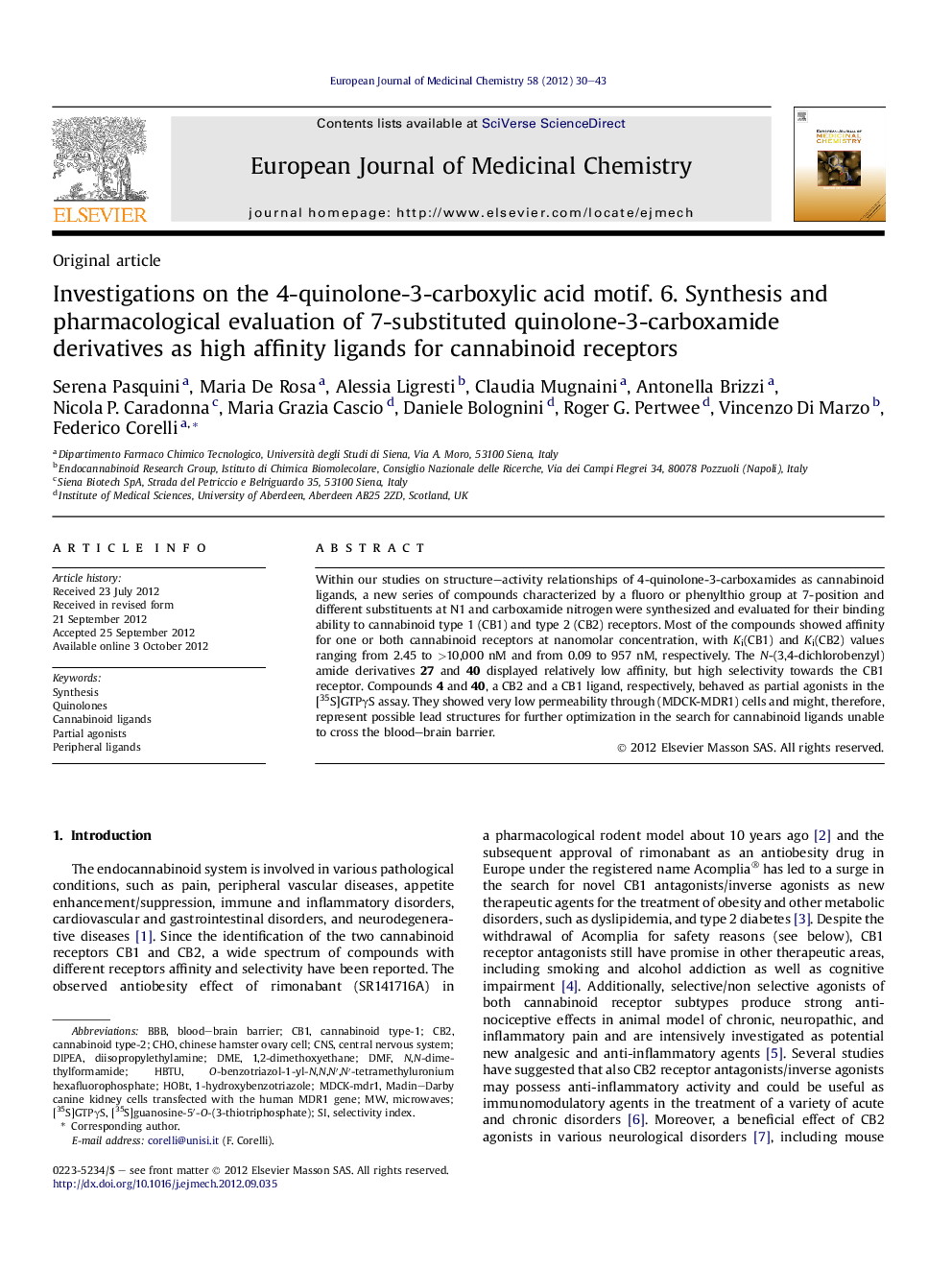| Article ID | Journal | Published Year | Pages | File Type |
|---|---|---|---|---|
| 1394423 | European Journal of Medicinal Chemistry | 2012 | 14 Pages |
Within our studies on structure–activity relationships of 4-quinolone-3-carboxamides as cannabinoid ligands, a new series of compounds characterized by a fluoro or phenylthio group at 7-position and different substituents at N1 and carboxamide nitrogen were synthesized and evaluated for their binding ability to cannabinoid type 1 (CB1) and type 2 (CB2) receptors. Most of the compounds showed affinity for one or both cannabinoid receptors at nanomolar concentration, with Ki(CB1) and Ki(CB2) values ranging from 2.45 to >10,000 nM and from 0.09 to 957 nM, respectively. The N-(3,4-dichlorobenzyl)amide derivatives 27 and 40 displayed relatively low affinity, but high selectivity towards the CB1 receptor. Compounds 4 and 40, a CB2 and a CB1 ligand, respectively, behaved as partial agonists in the [35S]GTPγS assay. They showed very low permeability through (MDCK-MDR1) cells and might, therefore, represent possible lead structures for further optimization in the search for cannabinoid ligands unable to cross the blood–brain barrier.
Graphical abstractFigure optionsDownload full-size imageDownload as PowerPoint slideHighlights► New 7-substituted 1-alkyl-1,4-dihydroquinoline-4-one-3-carboxamides were synthesized. ► Their affinity for both CB1 and CB2 cannabinoid receptors was evaluated. ► Compound 18 displayed the highest affinity for both receptors. ► Compounds 4 and 40 showed very low permeability through (MDCK-MDR1) cells.
